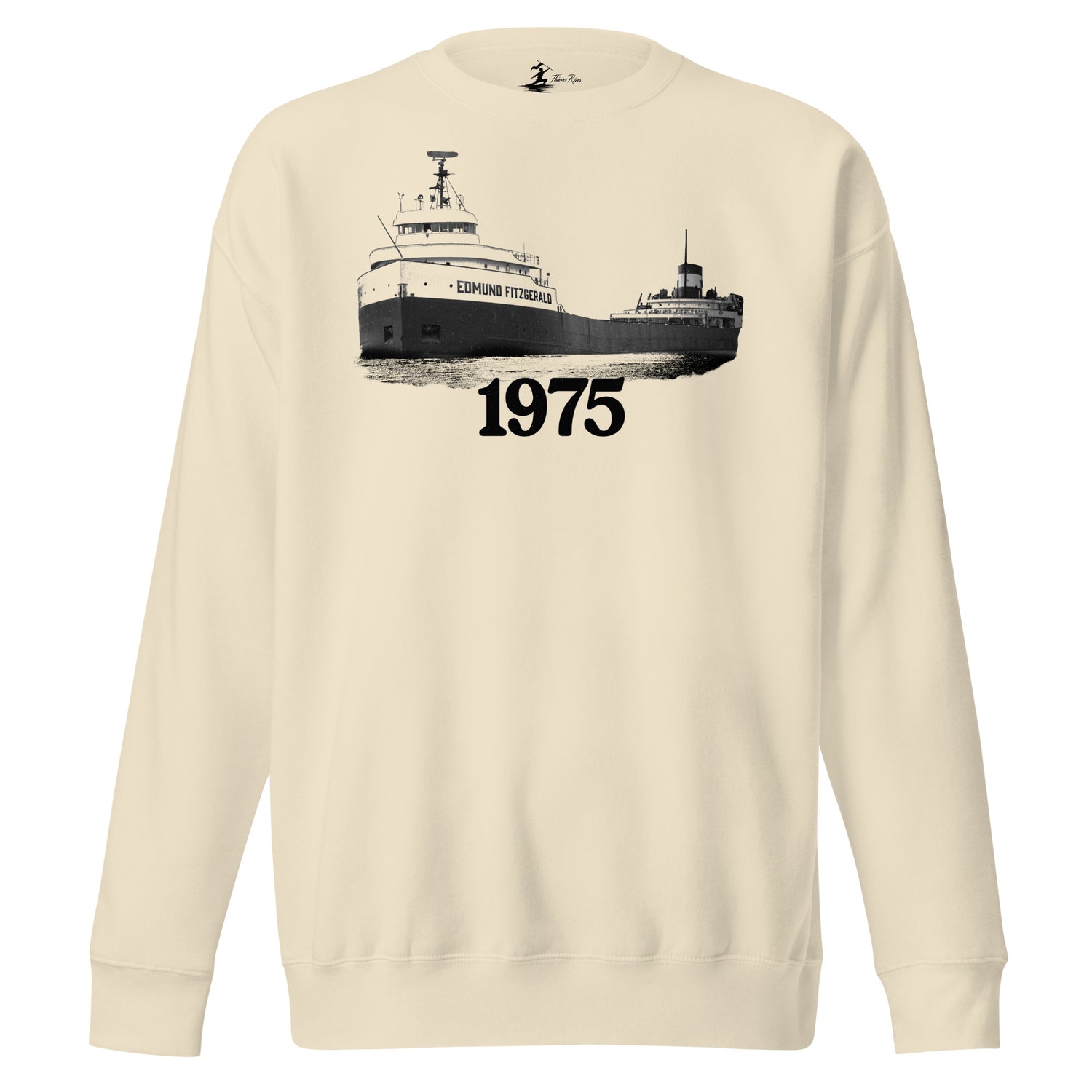In a world increasingly aware of the ethical and ecological impacts of our choices, the clothing we wear is no exception. The fashion industry is responsible for 10% of global carbon emissions, making it one of the largest contributors to climate change. This staggering figure highlights the environmental cost of fast fashion, which relies heavily on synthetic materials that also release harmful microplastics into the environment.
Natural fiber clothing, on the other hand, is a much-needed alternative — combining comfort, durability and sustainability.
With that said, let’s explore how natural fiber clothing is redefining the fashion world. Whether you’re new to the concept or looking to deepen your understanding, you’ll discover why making the switch is a step toward a more eco-conscious wardrobe.
What Is Natural Fiber Clothing?

Natural fibers are materials derived from plants or animals, such as cotton, wool, hemp, mohair, silk or alpaca, for example. These fibers can be harvested from renewable sources like cotton plants or sheep’s wool, making them an eco-friendly alternative to synthetic fibers.
These natural materials are valued for their breathability, durability and biodegradability, while also offering superior comfort against the skin. When produced sustainably, clothing made from these fibers supports eco-friendly fashion practices by reducing dependence on petroleum-based materials.
Natural Fibers vs. Synthetic Materials

Understanding the differences between natural fibers and synthetic materials is crucial to making more informed, sustainable fashion choices. Each type of fiber has distinct properties that impact its use.
Natural Fibers
Natural fibers are sourced from renewable resources such as plants (cotton, hemp) and animals (wool, silk). These materials are:
- Biodegradable: They break down naturally, returning nutrients to the earth without leaving harmful residues.
- Breathable: Natural fibers allow air to circulate, making them ideal for all seasons. Cotton, for instance, wicks away moisture, while wool regulates body temperature.
- Eco-Friendly: Their production typically involves natural production methods, fewer chemicals and a smaller overall carbon footprint compared to synthetic alternatives.
Synthetic Materials
Synthetic fibers like polyester, nylon and acrylic are petroleum-based, created through energy-intensive chemical processes. These materials are:
- Non-Biodegradable: They can persist in landfills for hundreds of years, contributing to long-term environmental pollution.
- Chemical-Heavy: Often treated with flame retardants, water repellents, or dyes that can leach into soil and water, harming ecosystems.
- Less Breathable: Synthetic fabrics tend to trap heat and moisture, making them less comfortable for prolonged wear.
Did You Know?
Polyester, one of the most common synthetic fibers, can take up to 200 years to decompose in landfills. This longevity underscores the environmental challenges posed by synthetic fabrics, especially in a fast-fashion world.
Why Wear Natural Fiber Clothing?

Choosing natural fiber clothing isn’t just about personal comfort — it’s about making a choice that supports shopping responsibly. This type of clothing offers a range of advantages that synthetic materials struggle to match. Let’s dive into the key benefits of wearing clothing made from these environmentally friendly materials.
1) Breathability: All-Season Comfort
One of the most celebrated qualities of natural fibers is their breathability. Materials like cotton, wool and flax linen allow air to circulate, helping to regulate body temperature and wick away moisture. This makes them ideal for any season.
For example, open-weave cotton t-shirts excel in hot weather because they naturally absorb and evaporate sweat, keeping you cool and comfortable throughout the day. Structured wool, on the other hand, is a champion in winter, insulating while still allowing moisture to escape, which helps prevent overheating.
2) Durability: Built to Last
Fast fashion often prioritizes quantity over quality, leading to garments that wear out quickly and end up discarded. Comparatively, natural fiber items are tougher.
For example, whether it’s thin linen shirts or thick alpaca sweaters, these garments are highly durable and maintain their quality and appearance even with regular wear and washing. This longevity reduces the need for frequent replacements, making them an ideal choice for those seeking sustainable wardrobe staples to combat fast fashion waste.
3) Repairability: Maintenance Leads to a Healthy Wardrobe
Another advantage of natural fibers is their repairability. Cotton and wool fabrics are easier to sew, patch or mend compared to synthetic materials, which are often prone to fraying or breaking. Repairing a torn seam or patching a small hole in a wool sweater extends its lifespan significantly, keeping it out of the landfill and in your wardrobe.
4) Hypoallergenic Qualities: Kind to Skin
Unlike synthetic materials, which are often treated with harsh chemicals like flame retardants or dyes, natural fibers are gentler on the skin. People with sensitive skin or allergies often find that natural fiber clothing causes less irritation.
Materials like cotton, silk and bamboo are especially prized for their softness and hypoallergenic properties, making them a go-to choice for anyone seeking relief from discomfort.
5) Environmental Benefits: A Greener Choice
Natural fibers shine when it comes to reducing the environmental impact of clothing. Unlike synthetic materials, which can take hundreds of years to decompose, natural fibers are biodegradable, breaking down naturally without leaving harmful microplastics behind.
This is critical when you consider that less than 1% of clothing is recycled, and most of the rest ends up dumped in a landfill or burned. The durability and repairability of natural fiber clothing help combat this cycle, ensuring fewer items end up as waste.
6) Recycling & Upcycling: Extending the Life of Clothing
Even durable natural fiber clothing eventually reaches the end of its life, but it doesn’t have to end up in a landfill. Recycling and upcycling are excellent ways to reduce waste and give garments a second purpose.
Natural fibers like cotton and wool can often be recycled into new products, such as insulation or industrial materials. Many cities offer recycling programs — for instance, in the Twin Cities, Ramsey County provides a worn-out clothing recycling program where textiles can be repurposed instead of thrown out.
If recycling isn’t an option, upcycling is another sustainable choice. Old cotton shirts can become cleaning cloths or reusable tote bags, and wool sweaters can be transformed into mittens or cushion covers. Donating to sustainable thrift shops may be another alternative, but watch out for places that may just take your stuff and throw it away anyway.
Actionable Tips for Caring for Natural Fibers
Proper care is essential to maximize the lifespan of natural fiber clothing. Here are some simple but effective tips:
- Wash with Mild Detergents: Harsh chemicals can break down natural fibers over time. Use gentle, eco-friendly detergents to clean your clothes without compromising their integrity.
- Avoid Over-Drying: Over-drying can cause natural fibers like cotton and wool to shrink or lose their elasticity. This is especially important for keeping graphic t-shirts in good shape, as high heat can cause prints to crack or peel over time. Air-dry on a clothesline when possible, or use a low/delicate heat setting on your dryer to preserve both the fabric and any designs.
- Store Wisely: Protect wool items from moth damage by storing them in breathable bags or containers, and keep cotton garments in a cool, dry place to preserve their quality and prevent unnecessary wear.
Making the Switch to Natural Fibers

Natural fiber clothing is an investment in quality, comfort and longevity. By looking for trusted certifications and supporting ethical brands, you can build a wardrobe that aligns with your values and contributes to a healthier planet. Every small step counts in the journey toward a more sustainable future.
1) Start with the Basics
The easiest way to begin is by focusing on wardrobe essentials made from natural fibers. Items like t-shirts, sweatshirts and hats are staples that you’ll wear regularly, making them a smart investment in sustainability.
- 100% Cotton Tees: Perfect for layering or standalone wear, cotton is breathable and comfortable for all seasons.
- Merino Wool Sweaters: These are excellent for colder weather, offering both warmth and durability.
- Hats & Accessories: Beanies or caps made from natural fibers add a practical, sustainable touch to your outfit.
2) Look for Certifications
When shopping for natural fiber clothing, check for certifications that ensure environmental and ethical standards are met. This lets you shop confidently. Some of the most trusted certifications include:
- GOTS (Global Organic Textile Standard): This certification guarantees that the cotton used is grown organically and processed without harmful chemicals.
- OEKO-TEX: This label ensures that garments are free from harmful substances and safe for human use.
3) Support Ethical & Transparent Brands
Brands that prioritize transparency in their product make up are much more likely to provide a sustainable clothing solution. Supporting such brands helps drive demand for sustainable fashion and encourages industry-wide change. Look for companies that:
- Use natural fibers like organic cotton, linen, or hemp in their collections.
- Commit to reducing waste through eco-friendly packaging and production methods.
Join the Movement Toward Sustainable Style
The reality is stark: less than 1% of clothing is recycled, and most of the rest ends up dumped in a landfill or burned. This waste is a direct result of fast fashion’s focus on quantity over quality. By choosing sustainable, long-lasting clothing made from natural fibers, you can play a role in reversing this trend. Every small decision, from investing in durable t-shirts to opting for eco-friendly accessories, contributes to a healthier planet and a more mindful future.
Making the switch to sustainable fashion is more than a trend — it’s a commitment to a healthier planet and a more thoughtful approach to how we dress. By choosing natural fiber clothing, you’re not just investing in quality pieces that last; you’re taking an active step toward reducing waste and supporting a more ethical fashion industry.
Shop Thieves’ River Sustainable Fashion

At Thieves’ River, we’re committed to providing customers with sustainable clothing made from high-quality, natural fibers. Our Oversized Faded Tees, crafted from 100% carded cotton, offer breathable comfort and exceptional durability for everyday wear. The Unisex Staple T-Shirt, made from high-quality airlume combed and ring-spun cotton, provides an ultra-soft feel while minimizing production waste. Each of our products, even accessories, are made to order, reducing overproduction.
Every piece reflects our dedication to sustainability, helping you build a wardrobe that’s better for Minnesota and the entire planet. Together, we can make eco-conscious style the new standard. Browse our apparel collections today.


